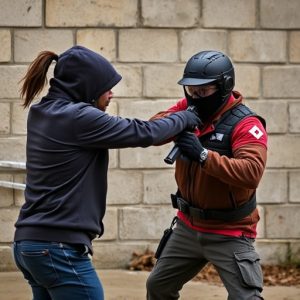Compact Stun Guns & Detection: Advancements, Challenges, and Legal Implications
Compact stun guns with integrated chargers offer a discreet and powerful self-defense solution, but…….
Compact stun guns with integrated chargers offer a discreet and powerful self-defense solution, but their growing popularity poses challenges for law enforcement in detecting these hidden weapons. Traditional metal detectors often fail to identify non-metallic components, leading to the need for advanced imaging technology. As the market drives innovative design, security professionals must adapt with updated detection methods. This evolving landscape presents a complex balance between public safety and individual rights, with legal frameworks varying across jurisdictions. Future research aims to develop sophisticated yet discreet detection technologies, enhancing city security while preserving privacy.
In today’s world, ensuring public safety and addressing concealed weapon concerns is paramount. This article delves into the intricate topic of concealed stun gun detection, exploring the evolving landscape and its implications. From the current state of technology to advancements in detection methods, we analyze the challenges and benefits, including the rise of compact stun guns with built-in chargers. Additionally, we dissect the legal aspects and glimpse into future prospects, shedding light on an essential aspect of personal and public safety.
- Understanding Concealed Stun Gun Detection: The Current Landscape
- Advantages of Compact Stun Guns with Built-in Chargers
- Challenges in Detecting Hidden Stun Devices
- Technology Advancements for Stun Gun Detection
- Legal Implications and Future Prospects for Stun Gun Detection
Understanding Concealed Stun Gun Detection: The Current Landscape

In today’s world, concealed stun gun detection is a growing concern for law enforcement and security professionals. With the proliferation of compact self-defense devices, like the popular compact stun gun with built-in charger, the challenge of identifying these tools has intensified. Traditional metal detectors and pat-downs often fail to detect stun guns, especially when they are designed to be subtle and unnoticeable on the body. This presents a significant gap in security measures, highlighting the need for more advanced detection techniques.
The current landscape suggests that there is no one-size-fits-all solution. Some airports and high-security areas have started employing advanced imaging technology and specialized metal detectors capable of identifying non-metallic objects. These tools can detect stun guns made from materials like plastic or polymer, but they are not foolproof. Additionally, the market for these compact stun guns is booming, leading to continuous innovation in design and materials, further complicating detection efforts. As a result, security professionals must stay updated with the latest advancements to effectively address this evolving challenge.
Advantages of Compact Stun Guns with Built-in Chargers
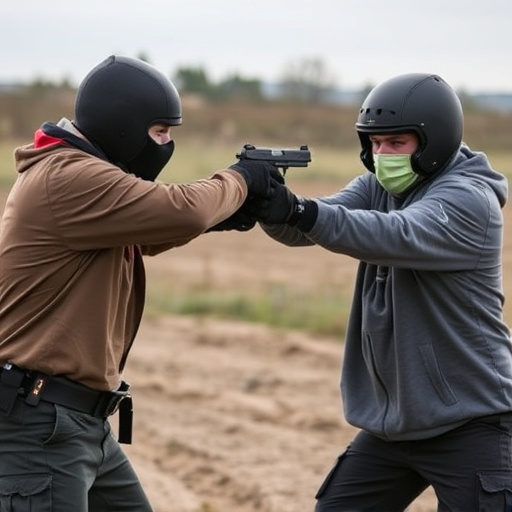
Compact stun guns with built-in chargers offer numerous advantages for personal safety. Their small size makes them easily portable, allowing users to carry them discreetly in purses, pockets, or even hidden under clothing. This discreetness is a significant benefit, as it enables individuals to feel more secure without drawing unnecessary attention. Moreover, these stun guns come equipped with convenient charging mechanisms, eliminating the need for separate chargers or cables. Built-in chargers simplify maintenance and ensure users are always prepared, as they can be charged and ready to use at any time.
The compact design also facilitates easier handling and faster deployment during emergencies. Unlike larger models that may require a certain level of strength or dexterity to operate, these stun guns are designed for ease of use. Their lightweight build and simple activation mechanisms mean users can defend themselves with greater confidence and less physical strain. This makes them an attractive option for individuals seeking effective self-defense tools without the bulk and complexity of traditional devices.
Challenges in Detecting Hidden Stun Devices
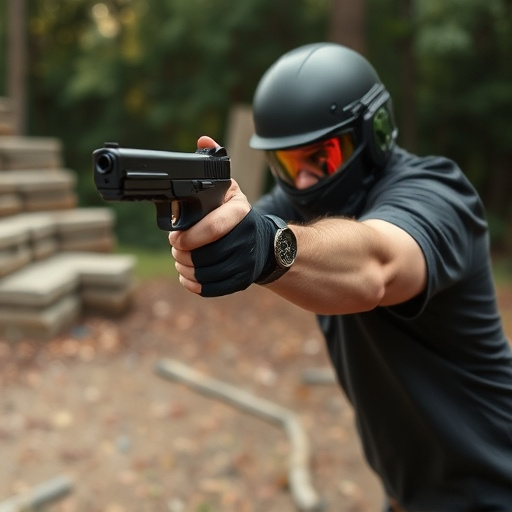
Detecting hidden stun guns, especially those designed as compact devices like the stun gun with a built-in charger, presents significant challenges for security personnel and law enforcement officers. Modern stun technologies can be nearly impossible to spot through standard metal detectors, as they often operate on different frequencies or utilize non-metallic components, making them undetectable by conventional means. The design of these devices, tailored to be discreet and easily concealed, further complicates the task of identification.
The portability and subtle appearance of compact stun guns with integrated chargers make them easily accessible for individuals seeking protection without drawing attention. This accessibility increases the likelihood of their use in various settings, from personal self-defense to potential security breaches in public spaces or workplaces. Consequently, law enforcement agencies are left with a critical need to develop advanced detection methods that can keep pace with these evolving stun gun designs.
Technology Advancements for Stun Gun Detection
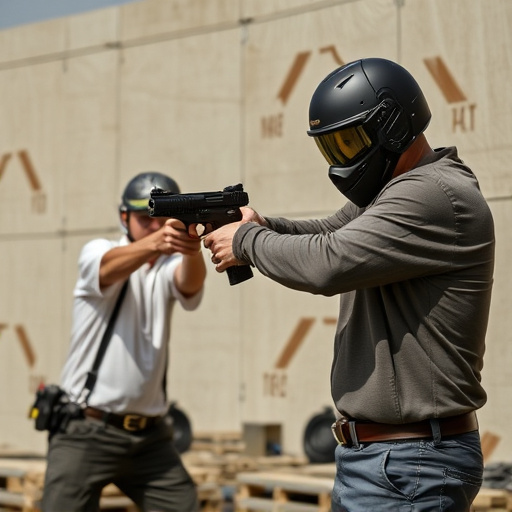
The evolution of technology has led to innovative solutions in concealed weapon detection, including advancements tailored for stun guns. One notable development is the creation of compact stun guns with integrated charging mechanisms. These devices are designed to be discreet and user-friendly, offering a convenient way to carry a self-defense tool while ensuring quick access during emergencies. The built-in charger eliminates the need for separate charging equipment, making it a practical choice for individuals seeking an efficient personal safety solution.
Through combining advanced materials and design principles, manufacturers have managed to create stun guns that are not only powerful but also lightweight and compact. These technological advancements address the concerns related to traditional stun gun detection methods, providing law enforcement and security personnel with improved capabilities to identify hidden weapons. The integration of charging features in these devices is a step towards making self-defense more accessible and less obtrusive, ensuring users can stay prepared without sacrificing convenience.
Legal Implications and Future Prospects for Stun Gun Detection
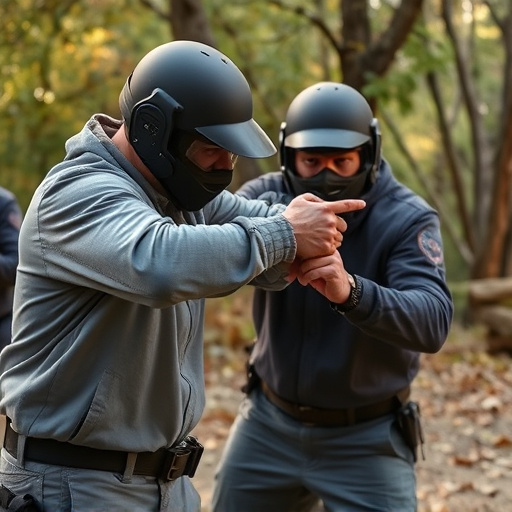
The legal landscape surrounding concealed weapon detection, including stun guns, is a complex web that varies significantly across jurisdictions. As technology advances, especially in compact stun gun designs like those with built-in chargers, the challenge for law enforcement and security personnel lies in staying ahead of accessibility and use by unauthorized individuals. Strict regulations often aim to prevent these devices from falling into the wrong hands, but they must also consider the rights of responsible citizens who wish to protect themselves legally. Striking a balance between public safety and individual freedoms is an ongoing debate that shapes future legal implications.
Looking ahead, the prospects for stun gun detection technology are intriguing. Ongoing research and development focus on creating more sophisticated and discreet devices capable of early detection. This could involve advanced materials, improved sensor technologies, or even integrated systems into everyday objects. While ensuring privacy remains a priority, the future may see more widespread adoption of these tools to enhance security measures. Such advancements could lead to smarter cities and public spaces where potential threats are identified more effectively, ultimately improving overall safety.
As we’ve explored, concealed stun gun detection presents a complex challenge. While technologies like metal detectors and advanced imaging systems offer some solutions, detecting hidden devices remains difficult. The advent of compact stun guns with built-in chargers, however, introduces new variables to consider. As technology advances, we can expect further developments in detection methods, leading to enhanced public safety. Legal frameworks will continue to evolve to keep pace with these changes, ensuring that the balance between personal privacy and community security remains intact.

